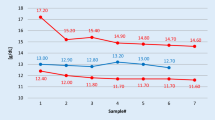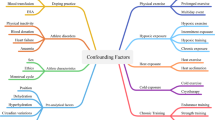Abstract
The Athlete Biological Passport programme was initiated in 2009 by the World Anti-Doping Agency for making the anti-doping programme more effective and stronger. There are three modules in this ABP programme: haematological, steroidal and endocrinological. Currently, the first two modules have been implemented. The newer products such as recombinant human erythropoietin, recombinant proteins, and peptides are similar to those produced naturally. Hence, detection of these substances even with advanced techniques is difficult. Therefore, the concept of ABP came into existence which is based on longitudinal monitoring of biological markers and their variations over a period of time. The ABP does not rely upon the detection of a particular prohibited substance but it reflects the changes in biological markers collated over an athlete’s career. Hence, athletes can be monitored through constant interpretation of the passport data. There are many advantages with the implementation of this programme; however, there are various issues which may lead to false interpretation of passport data that must be taken into consideration.


Similar content being viewed by others
Abbreviations
- ABP:
-
Athlete biological passport
- ADAMS:
-
Anti-doping administration and management system
- ADOs:
-
Anti-doping organisations
- ADRV:
-
Anti-doping rule violations
- APMU:
-
Athlete Passport Management Unit
- GH:
-
Growth hormone
- Hb:
-
Haemoglobin
- NADA:
-
National Anti-Doping Agency
- RBC:
-
Red blood cells
- rh-EPO:
-
Recombinant human erythropoietin
- WADA:
-
World Anti-Doping Agency
References
WADA. Athlete Biological Passport operating guidelines, June 2019, Version 7.1. https://www.wada-ama.org/sites/default/files/resources/files/guidelines_abp_v71.pdf. Retrieved Dec 13, 2019].
Sottas, P.-E., Robinson, N., Rabin, O., & Saugy, M. (2011). The athlete biological passport. Clinical Chemistry,57(7), 969–976.
Times of India. NADA begins Athlete Biological Passport programme, first target Olympic-bound athletes, 2019. https://www.timesofindia.indiatimes.com/sports/more-sports/others/nada-begins-athlete-biological-passport-programme-first-target-olympic-bound-athletes/articleshow/72456531.cms Retrieved Dec 20, 2019].
DNA India. NADA announces setting up of Athlete Passport Management Unit, 2017. http://www.dnaindia.com/sports/report-nada-announces-setting-up-of-athlete-passport-management-unit-2443291 Retrieved Dec 20, 2019].
Saugy, M., Lundby, C., & Robinson, N. (2014). Monitoring of biological markers indicative of doping: the athlete biological passport. British Journal of Sports Medicine,48(10), 827–832.
Robinson, N., Sottas, P. E., & Schumacher, Y. O. (2017). The athlete biological passport: How to personalize anti-doping testing across an athlete's career? Medicine and Sport Science,62, 107–118.
Bidlingmaier, M., Suhr, J., Ernst, A., Wu, Z., Keller, A., Strasburger, C. J., et al. (2009). High-sensitivity chemiluminescence immunoassays for detection of growth hormone doping in sports. Clinical Chemistry,55(3), 445–453.
Schumacher, Y. O., Saugy, M., Pottgiesser, T., & Robinson, N. (2012). Detection of EPO doping and blood doping: The haematological module of the athlete biological passport. Drug Testing and Analysis,4(11), 846–853.
WADA. Athlete Passport Management Unit Requirements and Procedures, 2019. https://www.wada-ama.org/sites/default/files/resources/files/td2019apmu_final2.pdf Retrieved Dec 14, 2019].
WADA. LIST OF ATHLETE PASSPORT MANAGEMENT UNITS (APMU), 2019. https://www.wada-ama.org/en/resources/athlete-biological-passport/list-of-athlete-passport-management-units-apmu Retrieved Dec 14, 2019].
WADA. Annual Report 2016. https://www.wada-ama.org/sites/default/files/resources/files/wada_annual_report_2016_en.pdf Retrieved Dec 13, 2019].
Zorzoli, M., & Rossi, F. (2010). Implementation of the biological passport: the experience of the International Cycling Union. Drug Testing and Analysis,2(11–12), 542–547.
Sottas, P.-E., Robinson, N., Saugy, M., & Niggli, O. (2008). A forensic approach to the interpretation of blood doping markers. Law Probability and Risk,7(3), 191–210.
Sanchis-Gomar, F., Pareja-Galeano, H., Brioche, T., Martinez-Bello, V., & Lippi, G. (2014). Altitude exposure in sports: The Athlete Biological Passport standpoint. Drug Testing and Analysis,6(3), 190–193.
Sanchis-Gomar, F., Martinez-Bello, V. E., Gomez-Cabrera, M. C., & Vina, J. (2011). Current limitations of the Athlete's Biological Passport use in sports. Clinical Chemistry and Laboratory Medicine,49(9), 1413–1415.
Wozny, M. (2010). The biological passport and doping in athletics. Lancet,376(9735), 79.
Banfi, G., Drago, L., & Lippi, G. (2010). Analytical variability in athletes haematological testing. International Journal of Sports Medicine,31(3), 218.
Sawka, M. N., Convertino, V. A., Eichner, E. R., Schnieder, S. M., & Young, A. J. (2000). Blood volume: Importance and adaptations to exercise training, environmental stresses, and trauma/sickness. Medicine and Science in Sports and Exercise,32(2), 332–348.
Schumacher, Y. O., Wenning, M., Robinson, N., Sottas, P. E., Ruecker, G., & Pottgiesser, T. (2010). Diurnal and exercise-related variability of haemoglobin and reticulocytes in athletes. International Journal of Sports Medicine,31(4), 225–230.
Sottas, P. E., Robinson, N., & Saugy, M. (2010). The athlete's biological passport and indirect markers of blood doping. Handbook of Experimental Pharmacology,195, 305–326.
Sanchis-Gomar, F., Martinez-Bello, V. E., Domenech, E., Nascimento, A. L., Pallardo, F. V., Gomez-Cabrera, M. C., et al. (2009). Effect of intermittent hypoxia on hematological parameters after recombinant human erythropoietin administration. European Journal of Applied Physiology,107(4), 429–436.
Sanchis-Gomar, F., Martinez-Bello, V. E., Nascimento, A. L., Perez-Quilis, C., Garcia-Gimenez, J. L., Vina, J., et al. (2010). Desmopresssin and hemodilution: Implications in doping. International Journal of Sports Medicine,31(1), 5–9.
Rogol, A. D., & Pieper, L. P. (2017). Genes, gender, hormones, and doping in sport: A convoluted tale. Frontiers in Endocrinology,8, 251.
Devriendt, T., Chokoshvili, D., & Borry, P. (2019). The athlete biological passport: Challenges and possibilities. International Journal of Sport Policy and Politics,11(2), 315–324.
Devriendt, T., Chokoshvili, D., Favaretto, M., & Borry, P. (2018). Do athletes have a right to access data in their Athlete Biological Passport? Drug Testing and Analysis,10(5), 802–806.
Sorensen, E. (2009). Debunking the Myth of Pregnancy Doping. Journal of Intercollegiate Sport,2, 269–285.
Van Renterghem, P., Van Eenoo, P., & Delbeke, F. T. (2010). Population based evaluation of a multi-parametric steroid profiling on administered endogenous steroids in single low dose. Steroids,75(13–14), 1047–1057.
Mullen, J. E., Thorngren, J. O., Schulze, J. J., Ericsson, M., Garevik, N., Lehtihet, M., et al. (2017). Urinary steroid profile in females - the impact of menstrual cycle and emergency contraceptives. Drug Testing and Analysis,9(7), 1034–1042.
Schulze, J. J., Mullen, J. E., Berglund Lindgren, E., Ericsson, M., Ekström, L., & Hirschberg, A. L. (2014). The impact of genetics and hormonal contraceptives on the steroid profile in female athletes. Frontiers in Endocrinology,5, 50.
Mullen, J., Gadot, Y., Eklund, E., Andersson, A., Schulze, J., Ericsson, M., et al. (2018). Pregnancy greatly affects the steroidal module of the Athlete Biological Passport. Drug Testing and Analysis., 10(7), 1070–1075.
Funding
No funding has been obtained for this article.
Author information
Authors and Affiliations
Corresponding author
Ethics declarations
Conflict of interest
The authors declare that they have no conflict of interest.
Ethical standard statement
This article does not contain any studies with human or animal subjects performed by any of the authors.
Informed consent
For this type of study informed consent is not required.
Additional information
Publisher's Note
Springer Nature remains neutral with regard to jurisdictional claims in published maps and institutional affiliations.
Rights and permissions
About this article
Cite this article
Mahendru, D., Kumaravel, J., Mahalmani, V.M. et al. Athlete Biological Passport: Need and Challenges. JOIO 54, 264–270 (2020). https://doi.org/10.1007/s43465-020-00040-7
Received:
Accepted:
Published:
Issue Date:
DOI: https://doi.org/10.1007/s43465-020-00040-7




